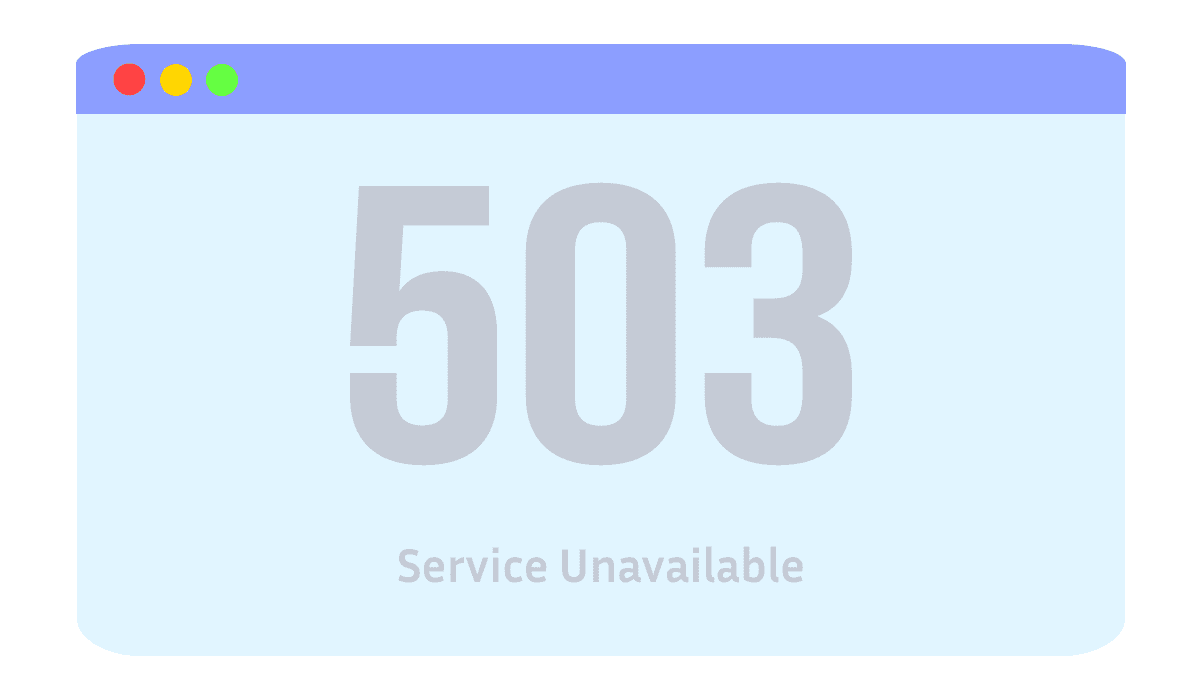Have you ever tried to visit a website and encountered a strange message saying "503 Error" or "Service Unavailable"? Don't worry; you're not alone! This article will explain what a 503 error is, why it happens, and how you can fix it. We'll use simple language and plenty of examples to help you understand this common web problem.

What is a 503 Error?
A 503 error is a specific type of HTTP status code. To better understand this concept, let's draw an analogy to a conversation between your computer (the client) and the website's server. When you attempt to visit a website, your computer essentially asks the server, "May I view your website, please?" Under normal circumstances, the server responds affirmatively, saying, "Certainly, here it is!" and proceeds to display the requested website.
However, there are instances when the server might respond with, "I apologize, but I'm unable to show you the website at this moment." This response is essentially what a 503 error represents – it's the server's way of communicating that it cannot process your request at that particular time.
Why Does a 503 Error Happen?
To illustrate this concept, imagine you're at a popular ice cream parlor on a sweltering summer day. There's an extensive queue of people eagerly waiting to purchase ice cream. The shop might display a sign stating, "We apologize, but we're currently overwhelmed. Please return later." This scenario closely resembles what happens when a 503 error occurs. Let's explore some common reasons for these errors:
- Server overload: Similar to the ice cream shop scenario, sometimes a website experiences an influx of visitors simultaneously. The server becomes incapable of handling all the incoming requests, resulting in 503 errors.
- Server maintenance: The website might be doing some updates or fixes. It's comparable to a store temporarily closing for cleaning – they'll resume operations soon, but not at that precise moment.
- Sudden popularity surge: If a website unexpectedly gains significant attention (perhaps due to a mention on television or trending on social media), the abrupt increase in visitors might overwhelm the server's capacity.
- Configuration errors: Occasionally, website administrators might inadvertently make mistakes while setting up the server, leading to 503 errors.
How to Fix a 503 Error?
If you're just visiting a website and see a 503 error, there's not much you can do except wait and try again later. However, if it's your own website showing a 503 error, here are some steps you can take:
- Wait and refresh: The problem might be temporary. Wait a few minutes and try refreshing the page.
- Check if your website is down: Use online tools to see if others can access your site. This helps you know if the problem is just on your end or affecting everyone.
- Look at your server resources: If you're the website owner, check if your server has enough resources (like memory and processing power) to handle visitor traffic.
- Disable plugins or themes: If you're using a content management system like WordPress, try disabling plugins or switching to a default theme to see if that resolves the issue.
- Check for DDoS attacks: Sometimes, bad actors might try to overwhelm your server on purpose. If you suspect this, contact your hosting provider for help.
- Review your server logs: Look for any unusual activity or errors that might be causing the 503 error.
- Contact your hosting provider: If you've tried everything and still can't fix the problem, reach out to your web hosting company for assistance.
How to Prevent 503 Errors?
While you can't always prevent 503 errors, there are some things website owners can do to reduce the chances of them happening:
- Use a Content Delivery Network (CDN): This spreads your website's content across multiple servers, reducing the load on any single server.
- Optimize your website: Make sure your site runs efficiently, so it doesn't use too many server resources.
- Monitor your traffic: Keep an eye on how many people visit your site and be prepared for traffic spikes.
- Schedule maintenance during off-peak hours: If you need to update or fix your website, do it when fewer people are likely to visit.
- Use caching: This technique can help your website handle more visitors without overloading the server.
What to Tell Your Visitors
If your website experiences frequent 503 errors, it's a good idea to create a custom error page. This page can:
- Explain what's happening in simple terms
- Provide an estimated time for when the site will be back up
- Offer alternative ways to get information or contact you
- Include links to your social media profiles for updates
For example, you could say: "We're sorry, but our website is taking a short break to cool down. It should be back up and running in about 15 minutes. In the meantime, why not check out our latest updates on Twitter?"
Conclusion
While a 503 error can be frustrating, it's typically a temporary issue. For visitors, the best course of action is often to wait and attempt to access the site again later. For website owners, understanding the causes of 503 errors and how to address them is crucial for maintaining a smooth-running site.
Remember that every website faces challenges from time to time. By being prepared and knowledgeable about handling 503 errors, you can ensure a better experience for your visitors and maintain a strong, reliable online presence. Stay proactive in monitoring your website's performance, and don't hesitate to seek professional help when needed. With the right approach, you can minimize downtime and keep your digital doors open to the world.
FAQs
Q1: What is a 503 error?
A1: A 503 error is an HTTP status code indicating that the web server is temporarily unable to handle the request. It usually occurs due to server overload or maintenance.
Q2: Is a 503 error permanent?
A2: No, a 503 error is typically temporary. The server should return to normal operation after the overload is resolved or maintenance is completed.
Q3: What causes a 503 error?
A3: Common causes include server overload, maintenance, misconfigured software, or issues with server resources like RAM or CPU.
Q4: How can I fix a 503 error as a website visitor?
A4: As a visitor, you can't directly fix the error. Try refreshing the page, clearing your browser cache, or returning to the site later.
Q5: What should website owners do to resolve a 503 error?
A5: Website owners should check server logs, review recent changes, ensure proper resource allocation, and consider upgrading their hosting plan if server overload is frequent.
About Us
Tencent EdgeOne offers a comprehensive suite of services that combines Content Delivery Network (CDN) capabilities with advanced security measures, making it an ideal choice for businesses seeking to enhance their online presence. Whether you want to improve website speed, strengthen security, or both, EdgeOne offers a scalable and efficient solution that adapts to your needs.
By choosing EdgeOne, websites can benefit from a seamless blend of performance optimization and robust security, ensuring a superior user experience while maintaining the highest levels of protection against various online threats. We have now launched a Free Trial, welcome to Sign Up or Contact Us for more information.

